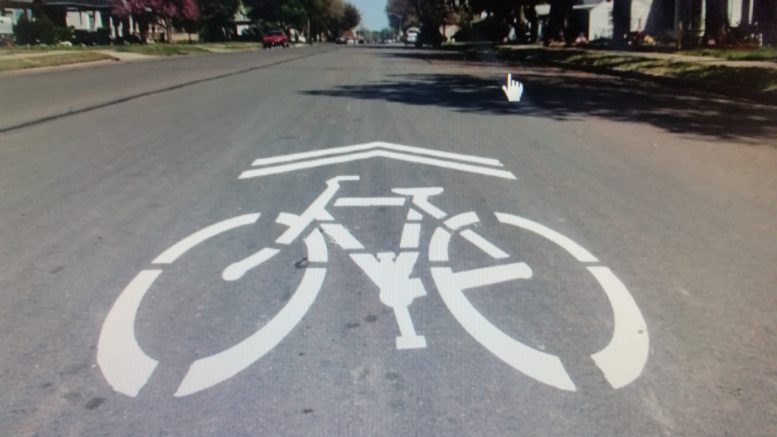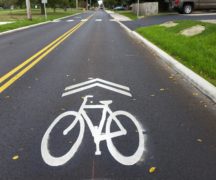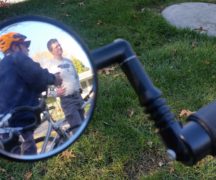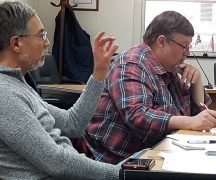By JAN LARSON McLAUGHLIN
BG Independent News
Bowling Green City Council members admitted the city may have qualified for a slow-moving vehicle placard in its progress on Complete Streets.
But when council took action Monday evening, some acknowledged the wait paid off.
In an effort to make city streets more accommodating to bicyclists, council had debated several options – many of them expensive.
On Monday, the city’s Transportation and Safety Committee and then City Council agreed on how to proceed with its first two streets as part of the Complete Streets program.
Conneaut and Fairview will be milled and resurfaced at an estimated cost of $529,393. That was the easy part since it was work that already needed done. Then came the choices of how to make them more accessible to two-wheeled travelers.
The option of widening Conneaut and making dash lanes for bicyclists the entire length of the street came with a price tag of $65,000. The option of creating a bike lane on Fairview fell out of favor early on because of logistical problems with neighbors and the golf course.
So on Monday, the decision was made to forgo the widening of Conneaut and use sharrows (street markings shaped like bikes and arrows) from Grove to Lafayette streets to remind motorists of the need to share the road.
And on Fairview, the decision was made to widen the sidewalk on the east side of the street, then have a crossover to the west side from Liberty to Grove streets. The $32,000 improvements would be ADA compliant.
“This will serve as a template for how we treat other streets,” said council president Michael Aspacher, acknowledging that the approval has been a long time coming. “I think it’s exciting that we are doing something.”
Council member Bob McOmber said he was glad the Fairview sidewalks, which are in poor condition, are being replaced. Scott Seeliger said he was relieved that the sidewalks could be widened to ADA standards without encroaching further into residential front lawns. And Bruce Jeffers said he was glad the city didn’t act hastily on bike accommodations that can be quite costly when other options may work just as well.
Many of the council members referred to the Yay Bikes program, which city officials participated in last November. The program promotes education as well as physical accommodations to make communities safer for bicycling.
The program teaches bicyclists to “own the lane,” by riding not along the edge but rather where the passenger tire runs. Motorists learn to swing wide and give bicyclists room.
Council member Sandy Rowland said she believes consistency is important. “I think it’s just going to set us up to confuse lots of people,” if the city were to go with dashed bike lanes in some places and sharrows in others.
Council member John Zanfardino said he was also open to sharrows rather than the expensive widening for a dashed lane on Conneaut.
“I’m certainly not going to say I’m against bike lanes,” Zanfardino said. But he did endorse the Yay Bikes concept as “safe, doable and realistic.”
“I’m drawn to the sharrows and the Yay Bikes approach,” he said.
City Engineer Jason Sisco said the sharrows, placed every 250 feet of so, act as a “constant reminder to vehicles.” He estimated the sharrows, which are melted plastic on the pavement, cost $300 a piece. Painted sharrows would be much less expensive, at $30 to $40 each, but would not last as long, Sisco said.
Though comfortable with the plans for Conneaut and Fairview, council member Daniel Gordon said the city shouldn’t stop there. Officials should keep open minds about actual infrastructure – not just education measures – to attract bicycling.
“I do believe that bike lanes need to be a part of the conversation,” Gordon said.
While bike lanes don’t make sense and are too expensive to put on most streets, the city should have a long-term vision for which streets would work for bike lanes, he said.
Gordon noted that other area communities, like Perrysburg and Rossford, are making progress on adding bike lanes. “I don’t want us slipping behind,” he said.
Sisco agreed that opinions vary on how to best accommodate two-wheeled traffic. Even at biking conventions he has attended, there is no clear consensus.
Steve Langendorfer, chairman of the Bowling Green Bicycle Safety Commission, said the city should keep all options open. He admitted that after taking part in the Yay Bikes program, he feels much more comfortable on city streets.
“I haven’t had anybody honk at me or try to run me off the road,” he said.
More signage is also being planned in the city to remind motorists that they need to share the road.




